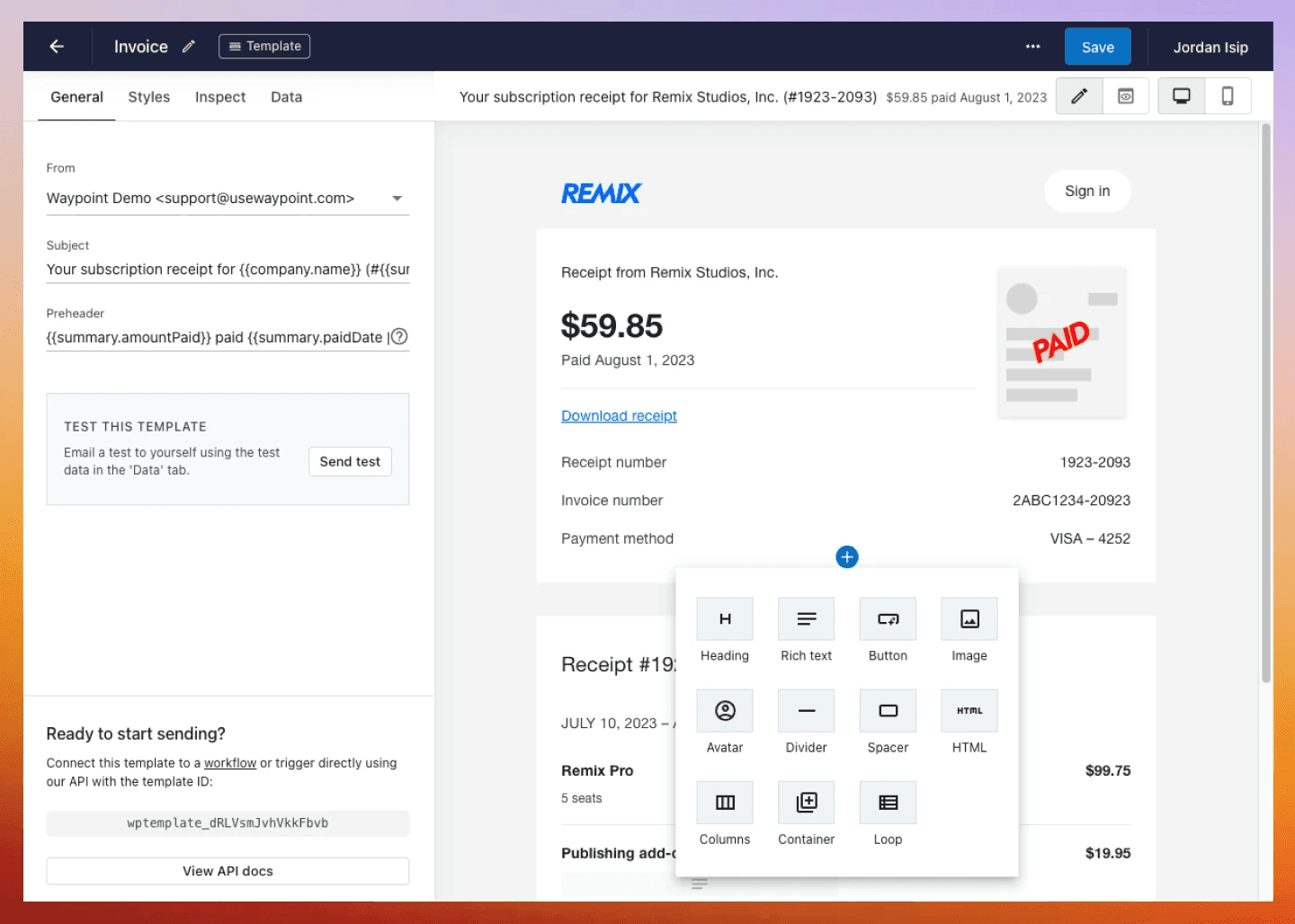Nov 20, 2023
In a previous blog post, we discussed how Amazon SES is the most affordable way to send reliable emails (with some tradeoffs to consider). In this blog post, we'll share an example on how to create email templates within Amazon SES (see examples of email templates).
Creating an Amazon SES template
Unfortunately, email templates can't be created from the Amazon SES dashboard, so we'll use code to setup the template.
To do this, we'll use the npm library for Amazon SES. Install with:
In the code example below, we're creating an HTML template in the htmlBody variable and then passing that to Amazon SES.
Note the dynamic variable name in the template body. Amazon SES allows for Handlebars templating within the template for variables, conditionals, partials, and more. We'll pass in the dynamic data while sending the email on the next step.
Sending emails through an SES template
When we're ready to send an email, we'll use SendEmailCommand to pass data to our template. The data is just the variables that our template is expecting in order to populate the template. In this simple example, it's just the name.
Assuming everything was configured properly, after running the code, our email should be sent with the template data populated.

Tip: you can monitor delivery of these emails by connecting Amazon SES to Amazon SNS – learn more.
A note on HTML email templates
For simple HTML emails with minimal formatting, writing raw HTML for templates works just fine.
However, when it comes to advanced formatting (eg. layouts, buttons, branding), the code for these templates quickly becomes a mess to maintain. This is primarily due to the challenges of cross-client support which forces developers to write 90s style HTML with inline CSS paired with tables within tables within tables. For details on cross-client support, caniemail.com is a wonderful resource.
To help remedy this, developers often use email template frameworks like MJML. These frameworks abstract many of these pain points into a highly reusable component based system that works across clients out of the box.
Looking for a more collaborative approach?
While component libraries are a step in the right direction, product teams often find that this approach can still lead to significant developer bottlenecks since template code is still within their codebase. This means every time a template needs to be adjusted or marketing wants to test different copy, a developer is needed for changes, pull requests, deploys, etc.
This is why some teams opt for a more collaborative approach.
Waypoint is a new approach to an email API. Developers send data through the API and designers or others on the product team can reference the data througha tightly integrated visual template builder:

Screenshot of Waypoint’s powerful transactional email template builder.
The added benefit of Waypoint Connect is much better observability as well.

Screenshot of Waypoint Connect’s logs on a single email (populated from your Amazon SNS events).
Wrap up
Let's face it, Amazon SES is hard to beat on price. But as we discussed in a previous blog post, SES is like buying wholesale and has it's limitations. For teams that want to collaborate around product emails, it's worth considering alternative approach that enables better collaboration (like Waypoint).
